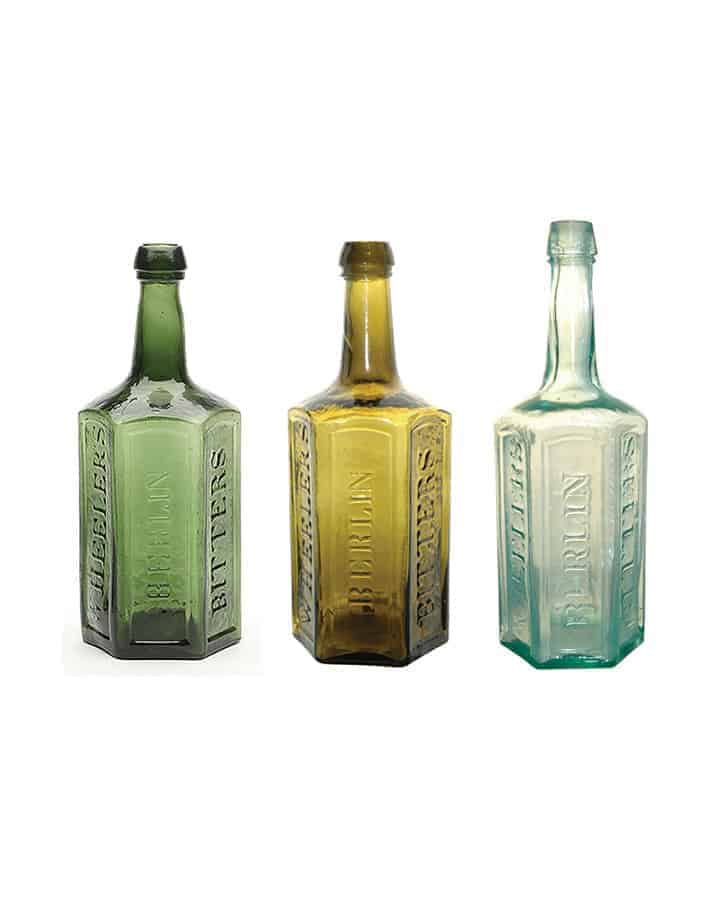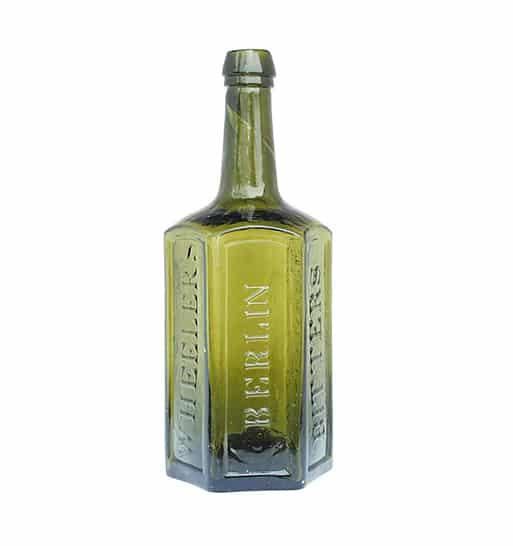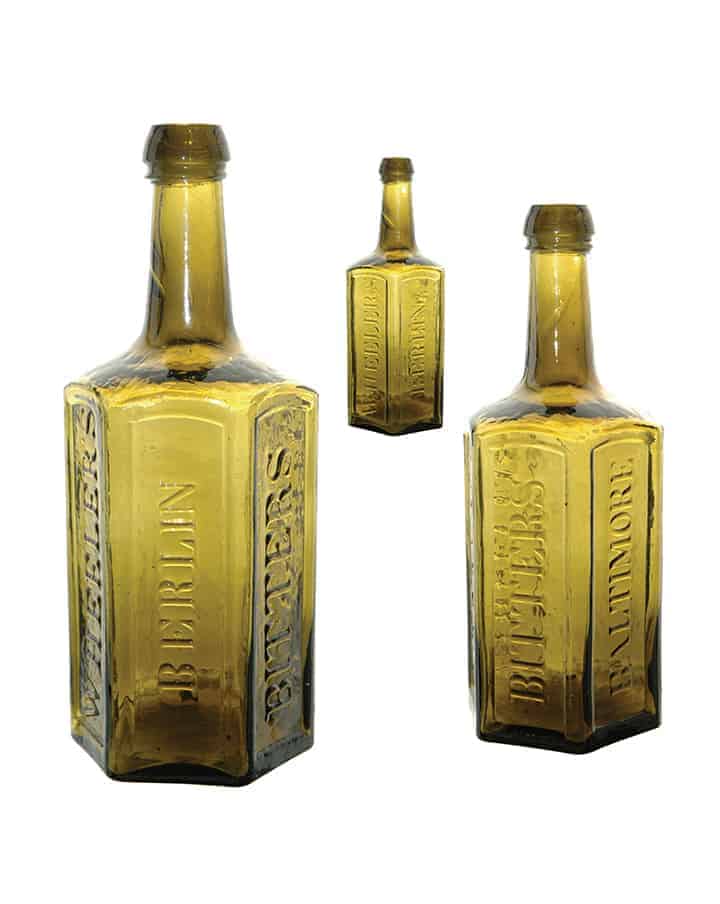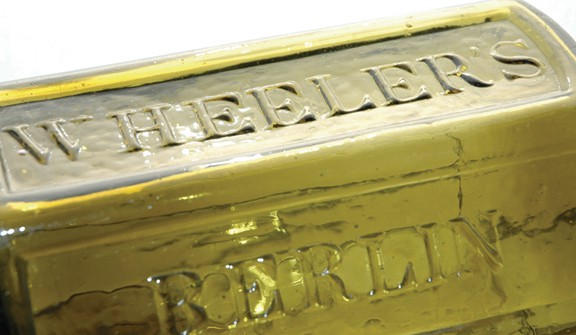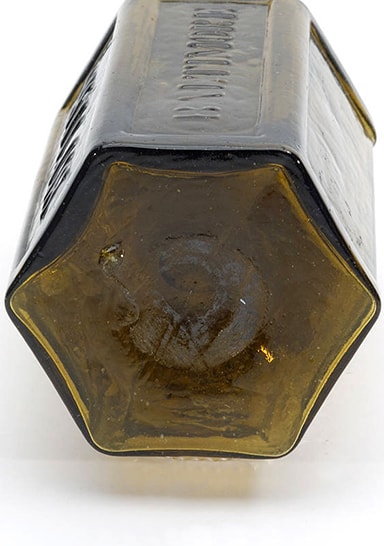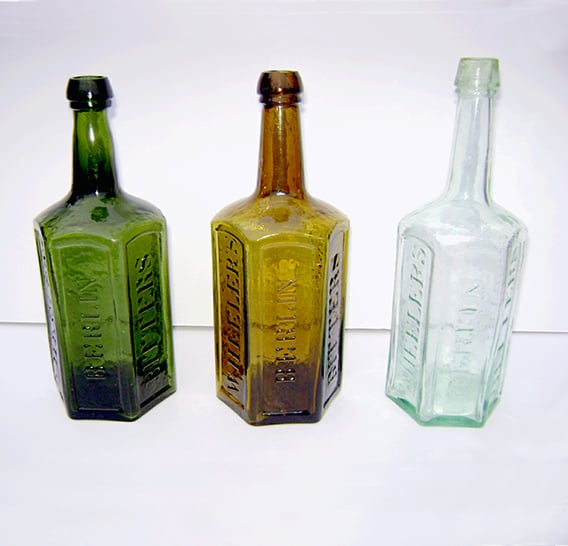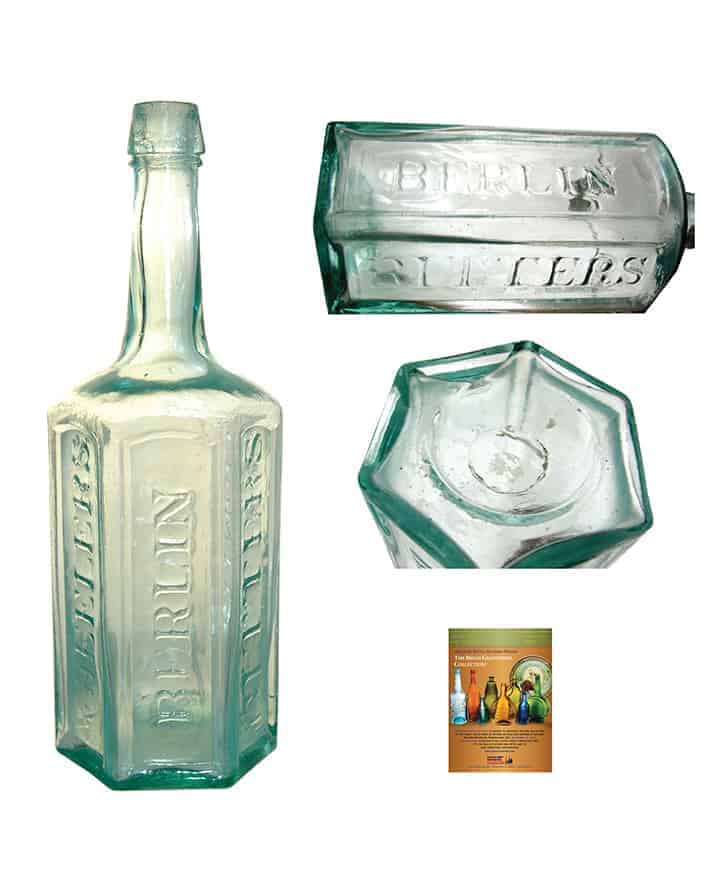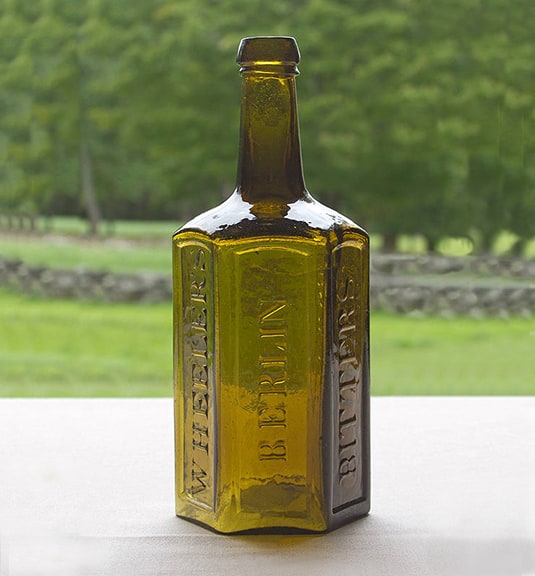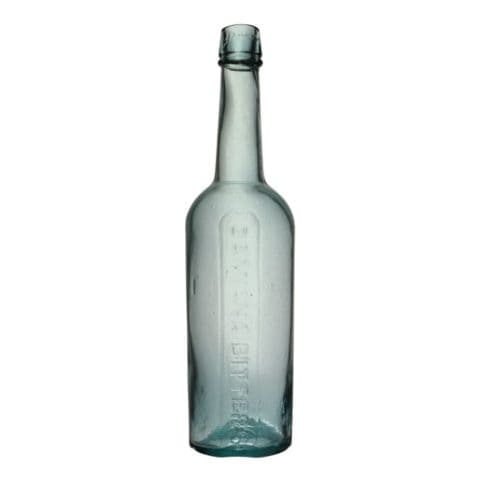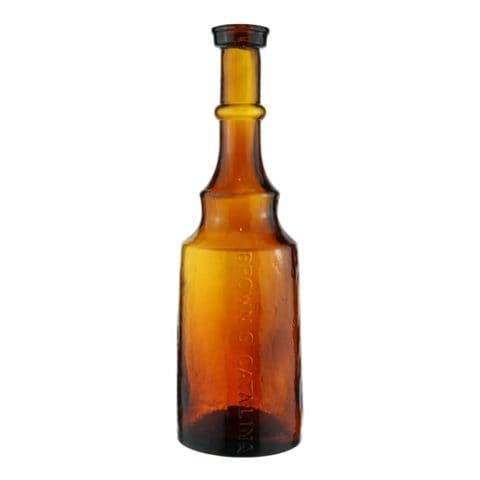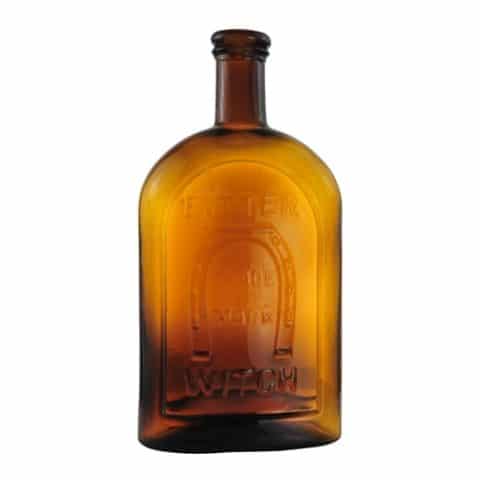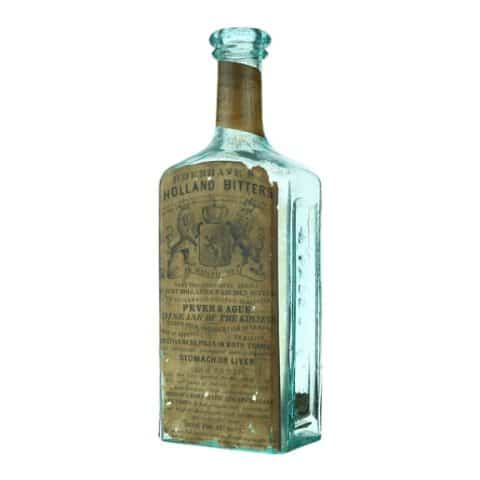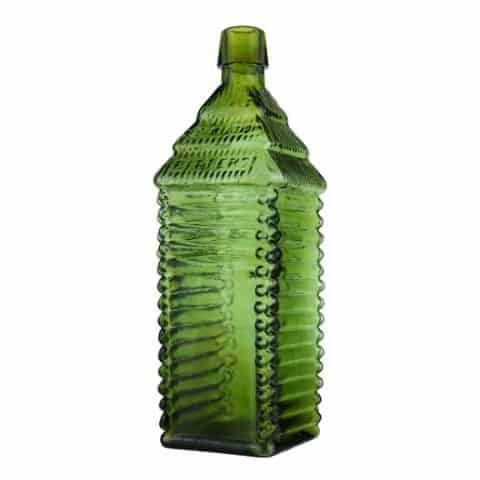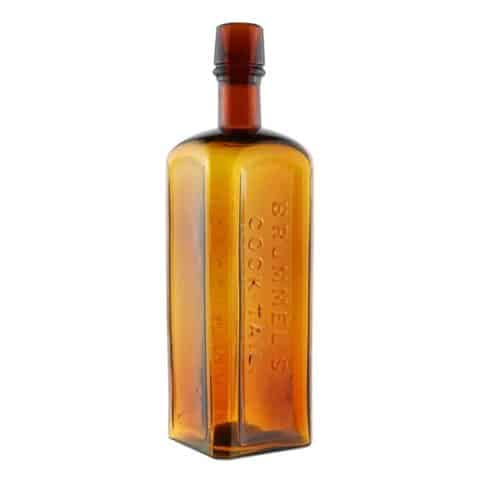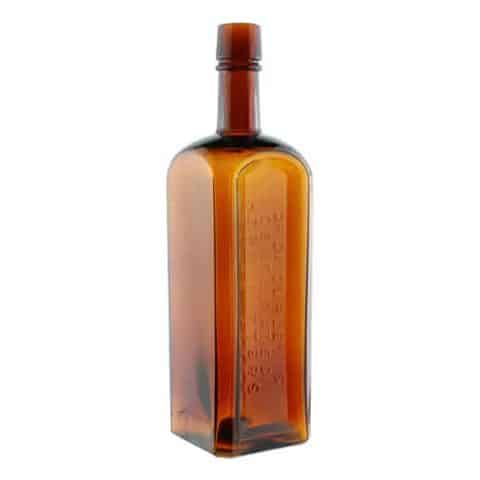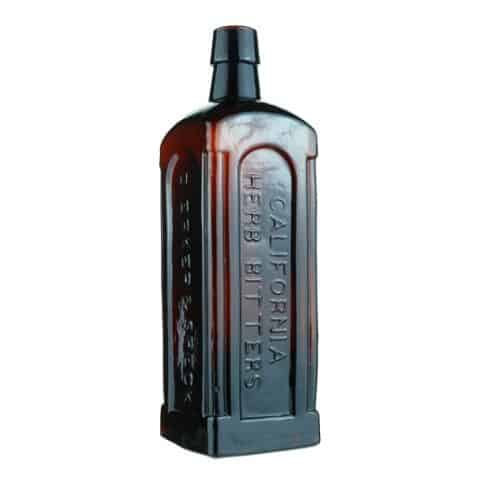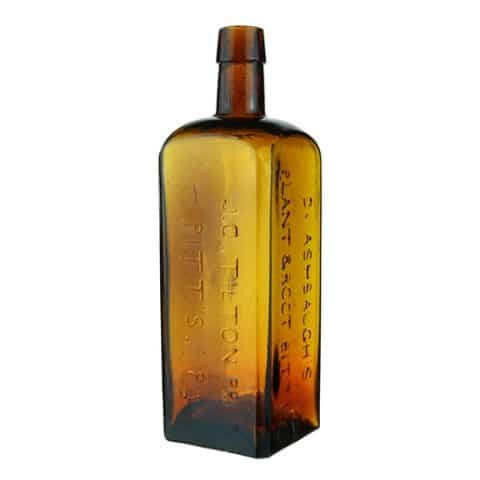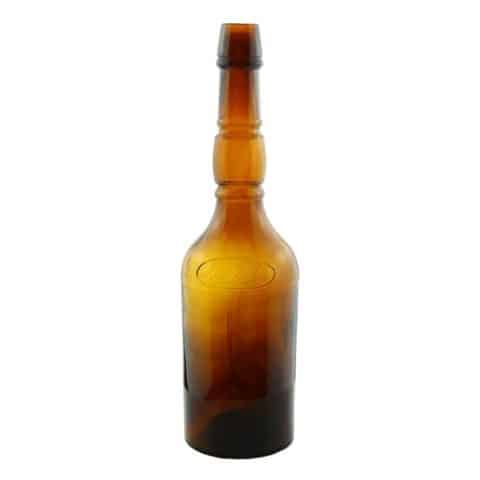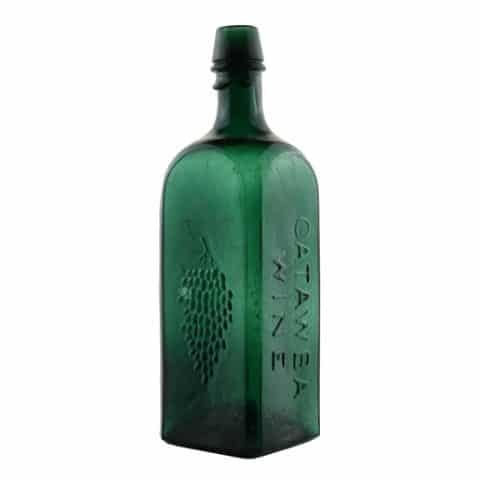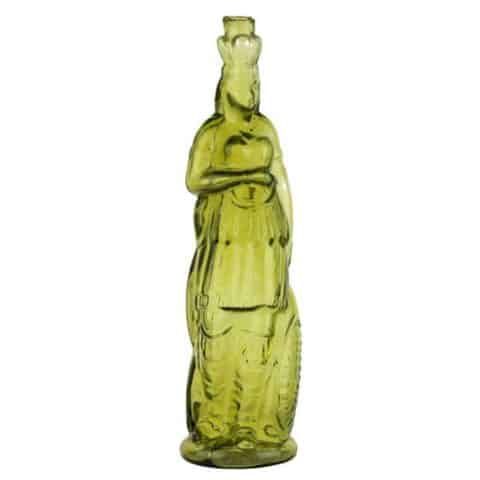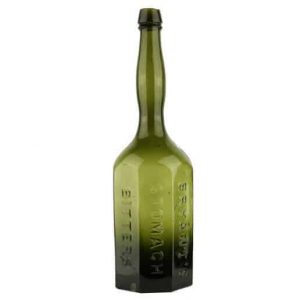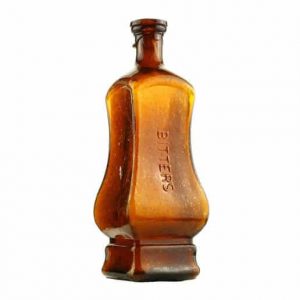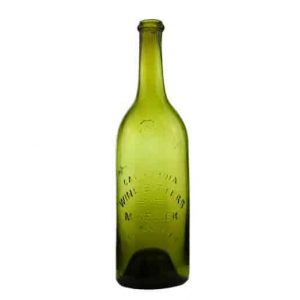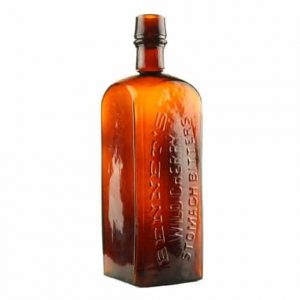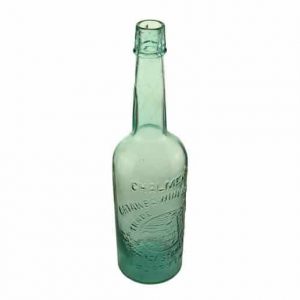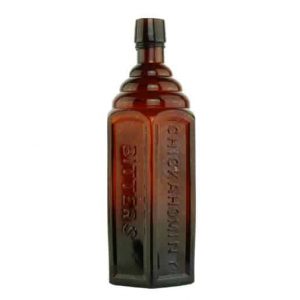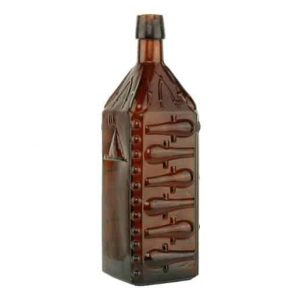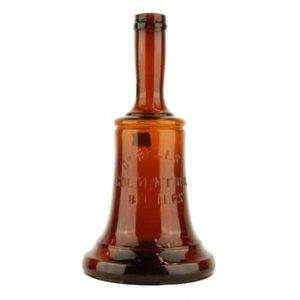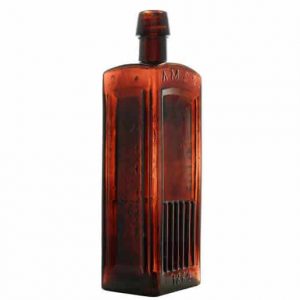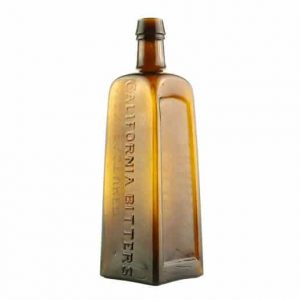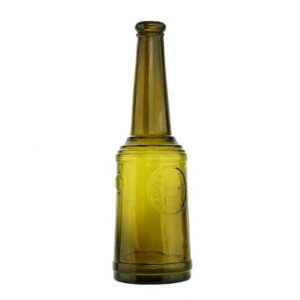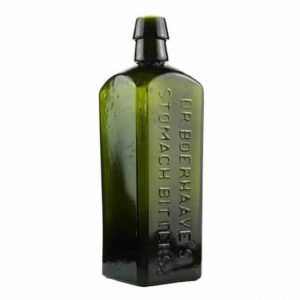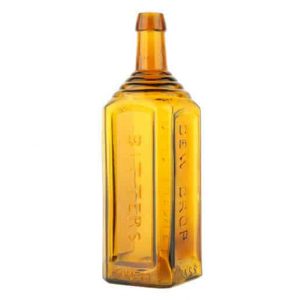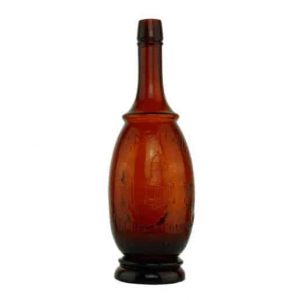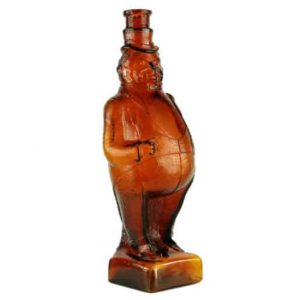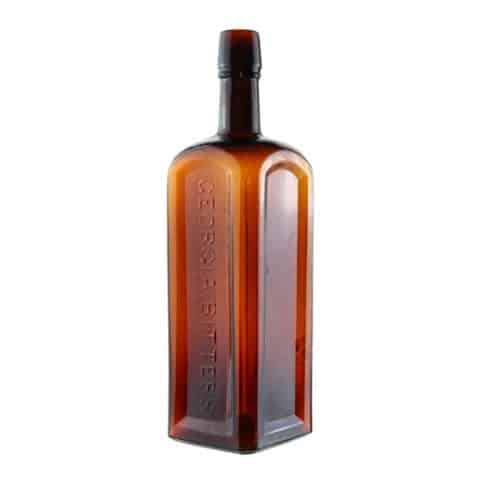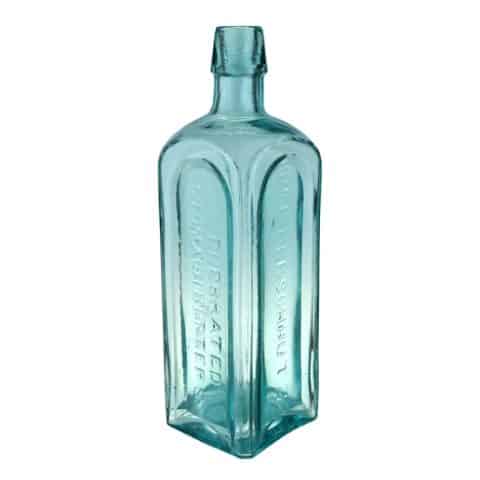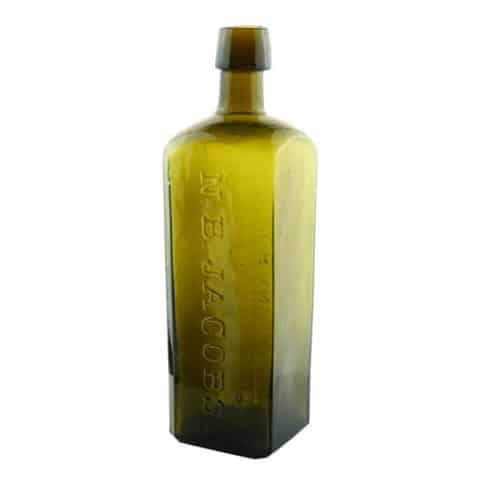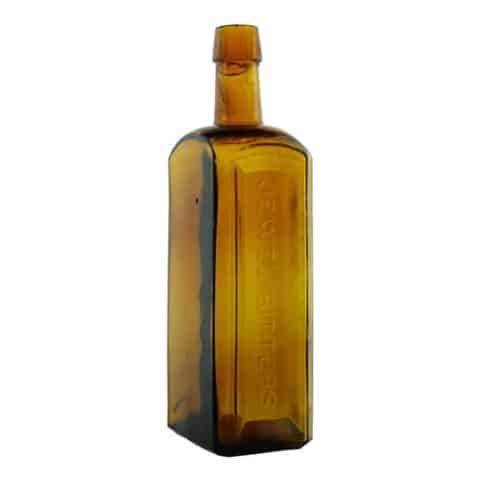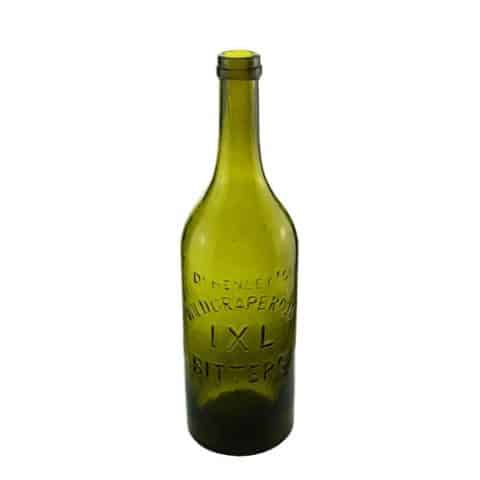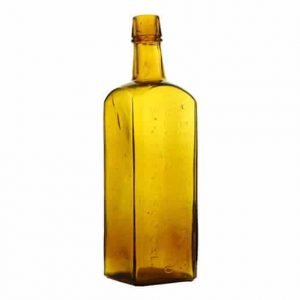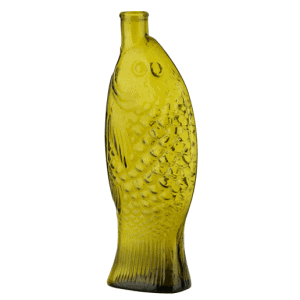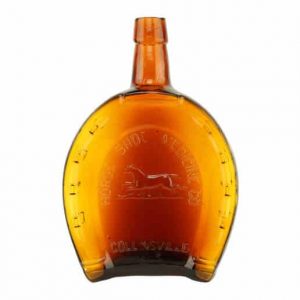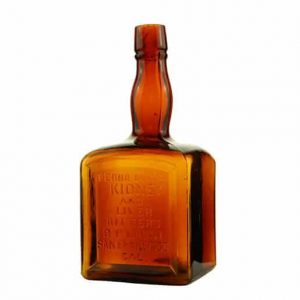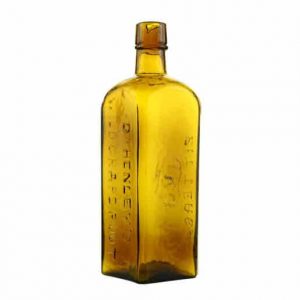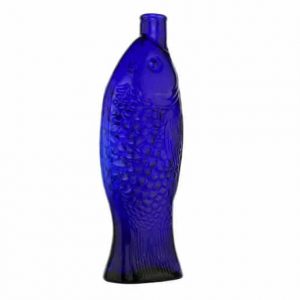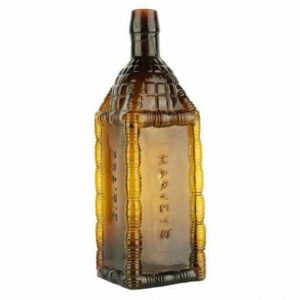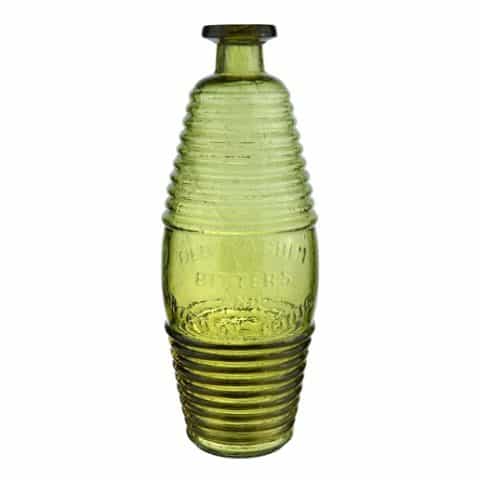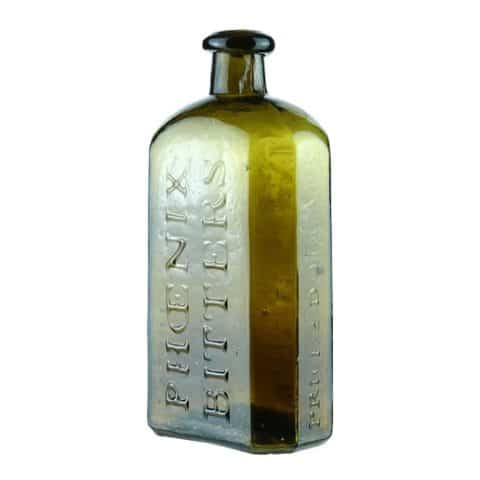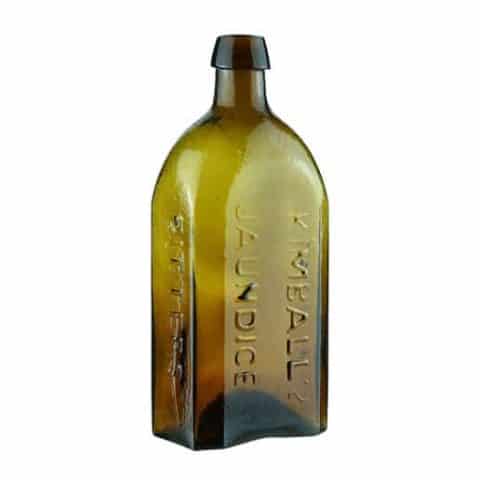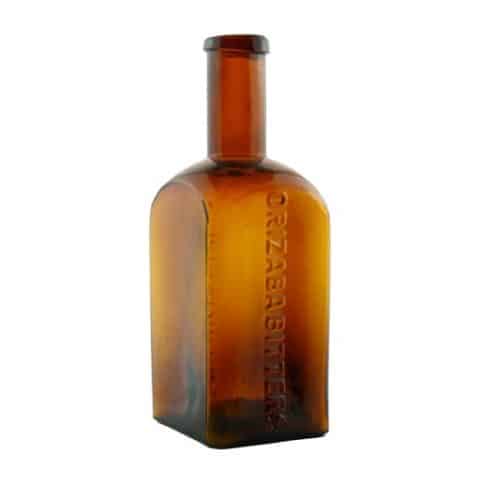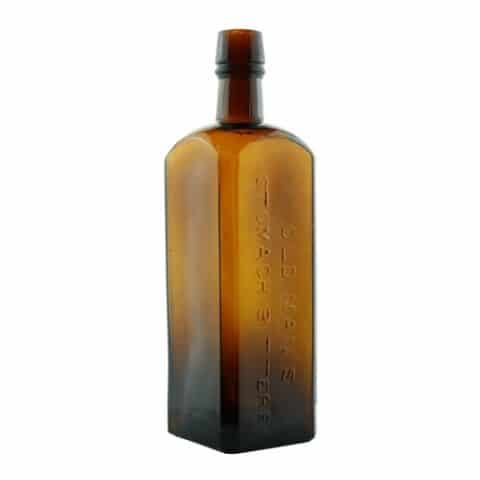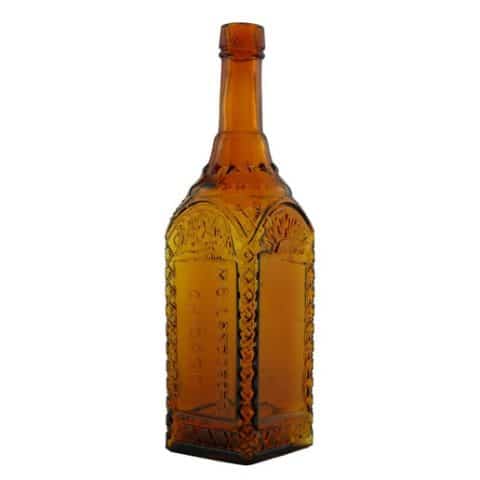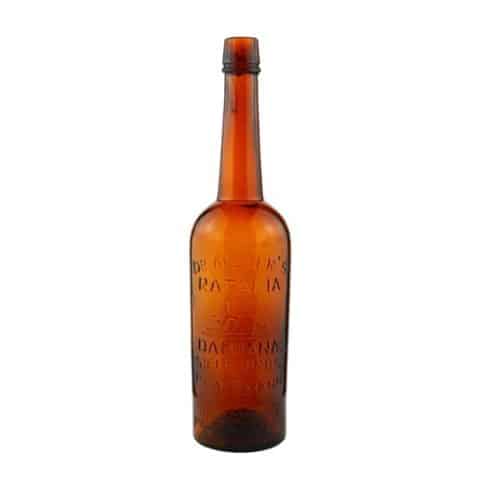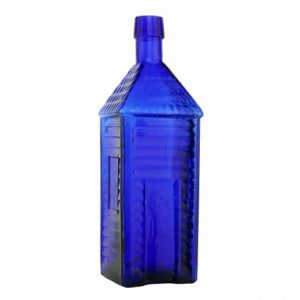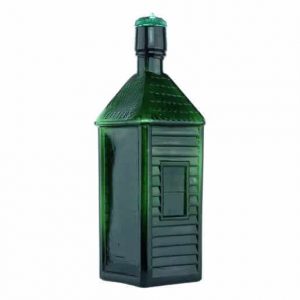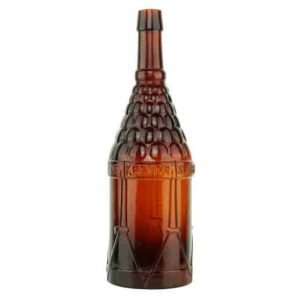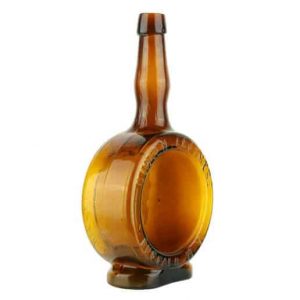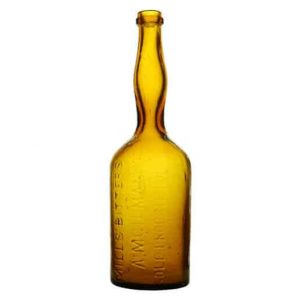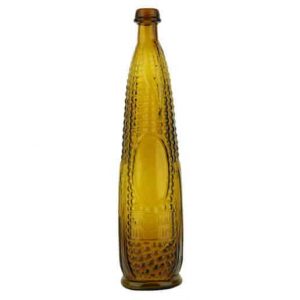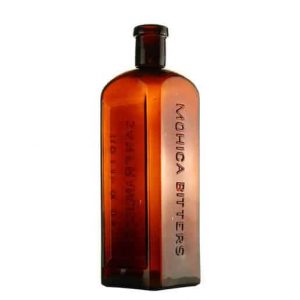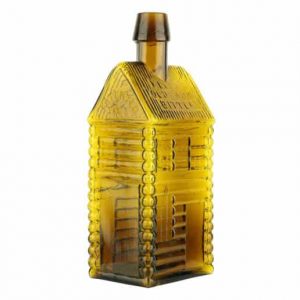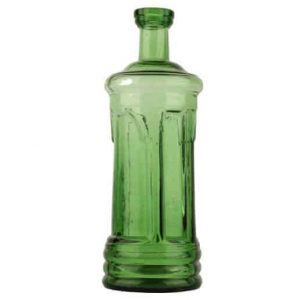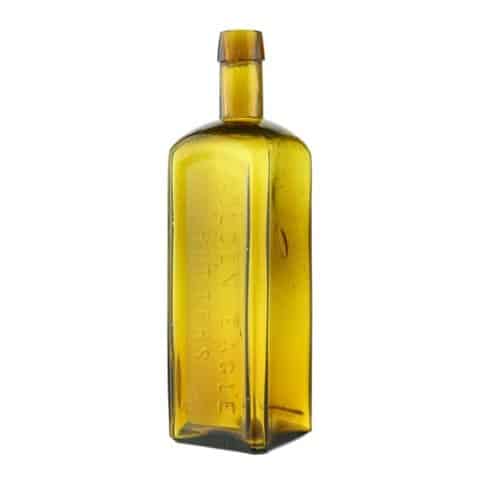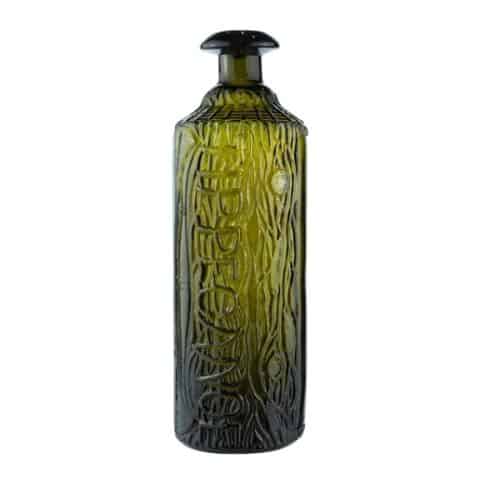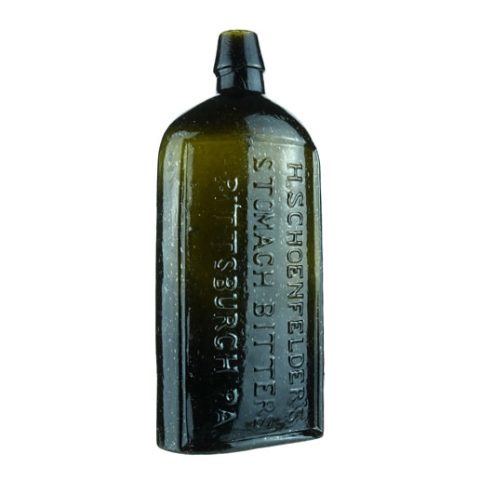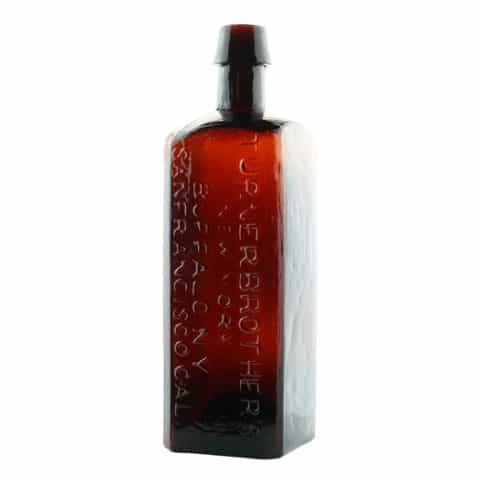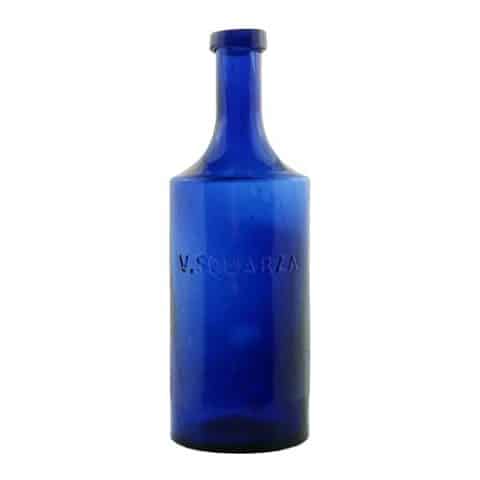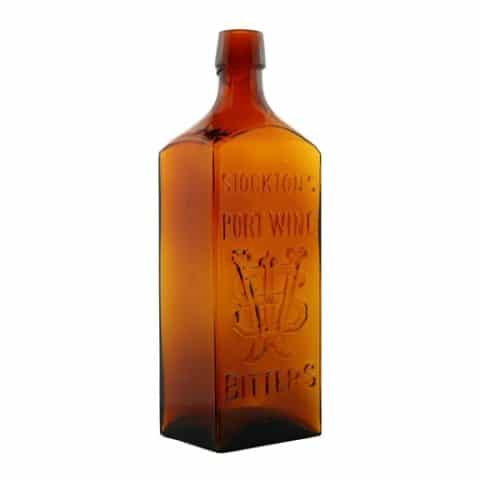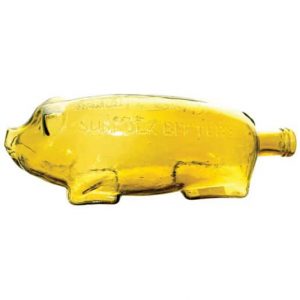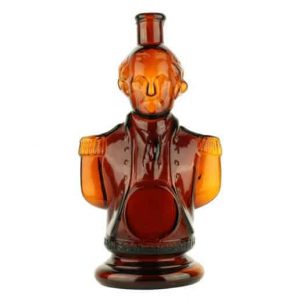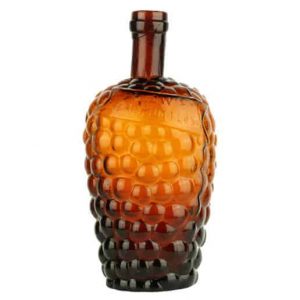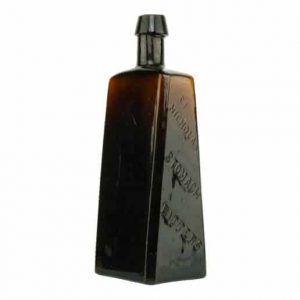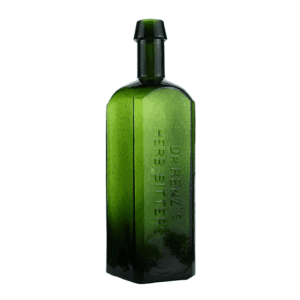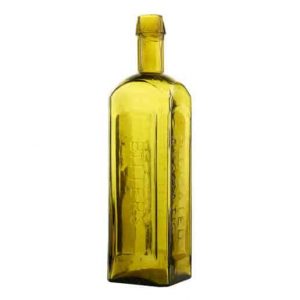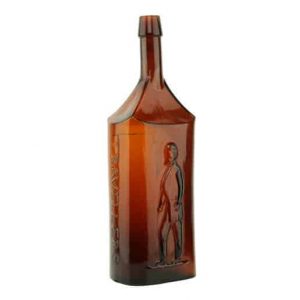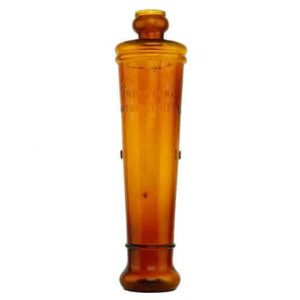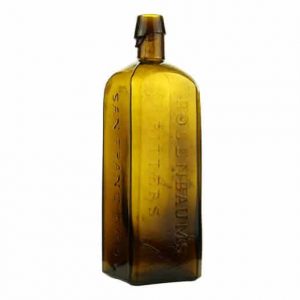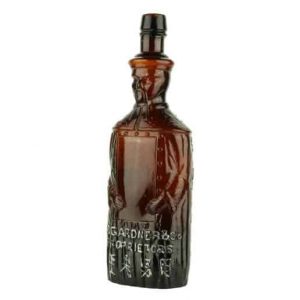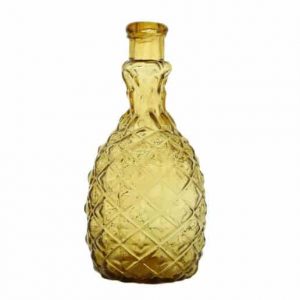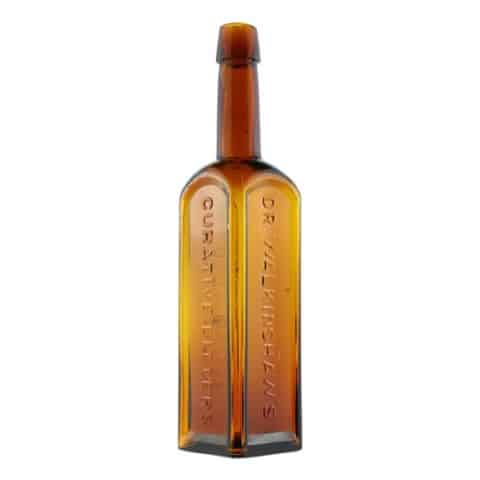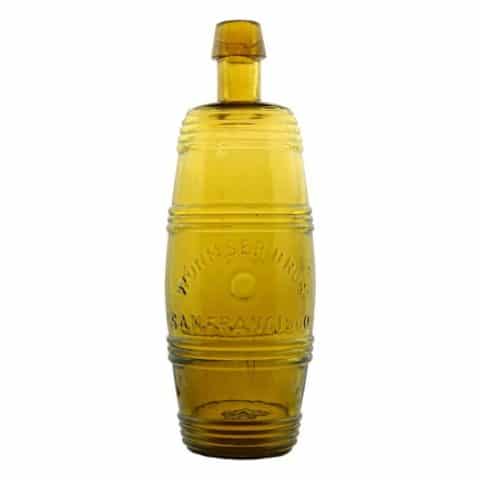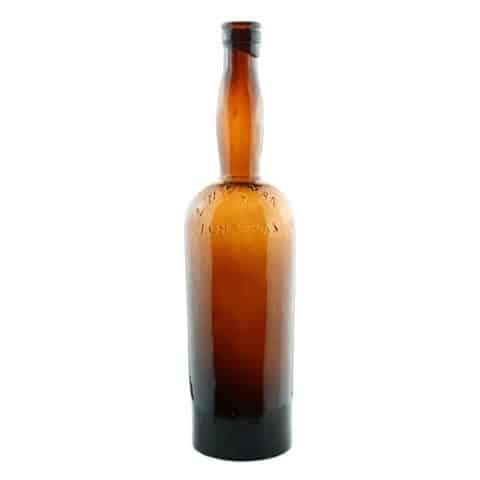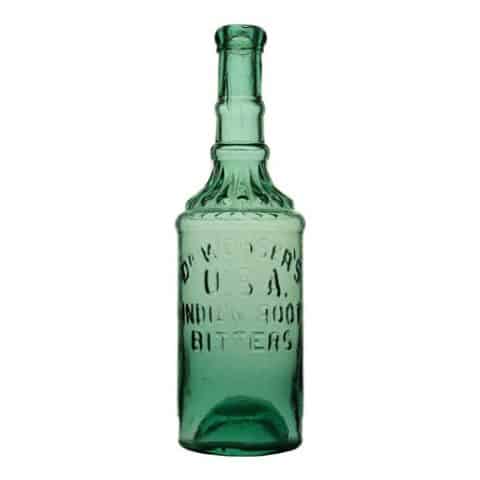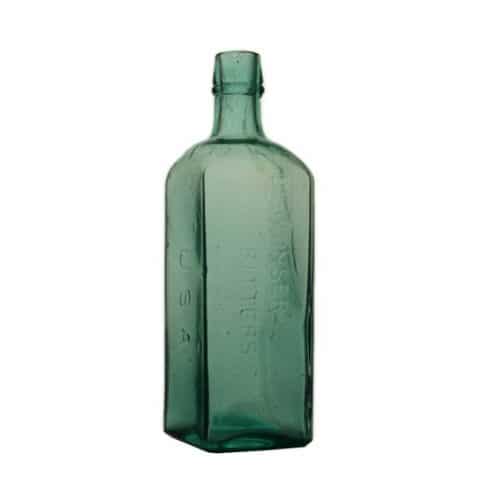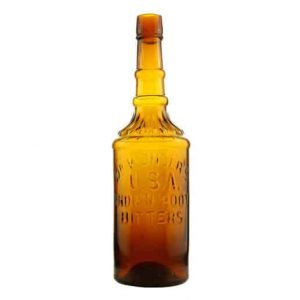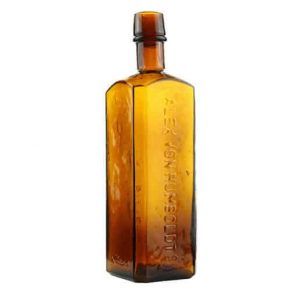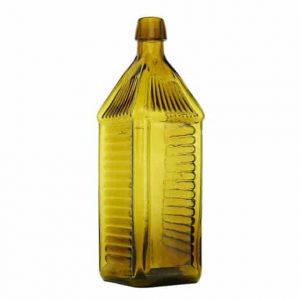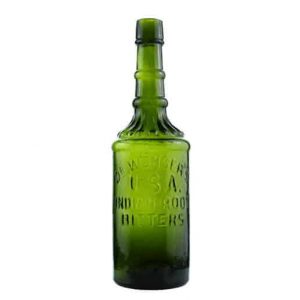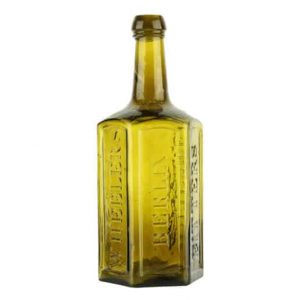Wheeler’s Berlin Bitters
Wheeler’s Berlin Bitters
Baltimore
W 83
Major Matthew Wheeler, Baltimore, Maryland
Hexagonal Yellow-Olive
Provenance: Ferdinand Meyer V Collection
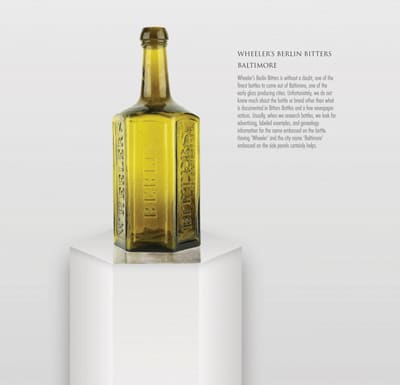
Wheeler’s Berlin Bitters is without a doubt, one of the finest bottles to come out of Baltimore, one of the early glass producing cities. For many years we did not know much about the bottle or brand other than what is documented in Bitters Bottles and a few newspaper notices. Usually, when we research bottles, we look for advertising, labeled examples, and genealogy information for the name embossed on the bottle. Having ‘Wheeler’ and the city name ‘Baltimore’ embossed on the side panels certainly helps.
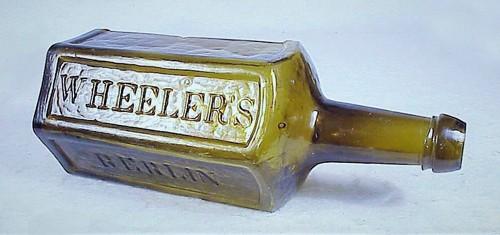
There are two notices placed in the Baltimore Sun newspaper in 1850. The first on November 13th is the Dissolution of the Co-partnership of Wheeler & Spriggs (M. Wheeler and Joseph A. Sprigg). They were importers of various dry goods and liquors. The second notice was placed in the Baltimore Sun on November 16th and states that having sold his interest in the late business of Wheeler & Sprigg that M. Wheeler, 42 Exchange Place, would carry on business in his own name “where can be had a general stock of fine old brandies, wines, Berlin bitter (sic), cherry brandy, segars, indigoes, &c.”
The really difficult part in researching M. Wheeler is because of his given name and his later penchant for often using just the letter “M” for his given name. His full birth name was Major Mathew Wheeler, even though he was not a military man. He was born in Maryland in 1803.
M. Wheeler is also listed in the 1851 Baltimore City Directory as an Importer of wines, brandies, cigars, indigo, &c. located at 42 W. Lombard Street living at the Exchange Hotel. The 1840 United States Federal Census lists M. Wheeler in name only living in Ward 9 of Baltimore City. Other relevant city directories and census records are not documented.
Oddly enough, there are newspaper records of Wheeler’s Berlin Bitters being auctioned off in both 1851 and 1861 leading us to believe there was a problem with the retail component for the brand. One notice in the Baltimore Sun on November 12, 1851, reported that Samuel J. Soper & Co., Auctioneers, were auctioning Furniture and Groceries including one lot for 11 cases of Berlin Bitters. On December 27, 1851, Soper ran another notice saying he was auctioning Wheeler’s Bitters. On April 22, 1861, ten years later, F. W. Bennett & Co. was auctioning “Superior Liquors” including Berlin Bitters.
Wheeler apparently was a well respected individual who dabbled in a number of ventures. He may have been a risk taker when it came to his occupations, which included a mariner, shipping magnate, real estate investor, commission merchant, actor, Whig activist, and finally a dealer in liquors. He found himself in financial trouble more than once, including one setback that cost him 2,000 acres of land in Virginia. Matthew Wheeler died in New York in 1857, while on a trip there.
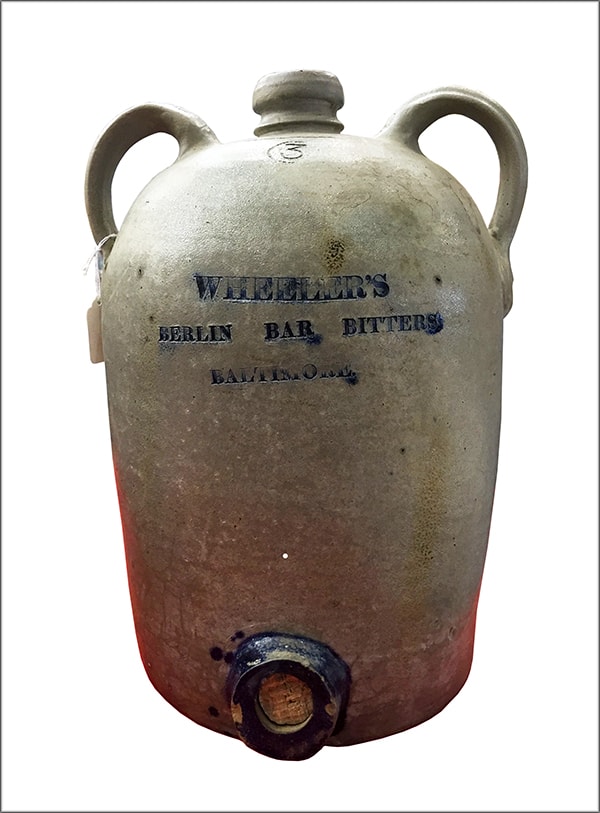
This hexagonal, pontiled (iron and open pontil) bottle comes in two primary molds and some rich colors. The typography is in a classic serifed alphabet and occurs on four of the six indented panels. There is an applied sloping collared mouth with a ring. The bottle is probably a Baltimore Glass Works product from around 1850 to 1860.
The Carlyn Ring and W.C. Ham listing in Bitters Bottles is as follows:
W 82.5 WHEELER’S // BERLIN // BITTERS // BALTIMORE // sp // sp //
10 x 3 (5 ½)
Hexagonal, Aqua, DLTC, Rough pontil mark, Extremely rare
1 sp. One double sunken panel for label
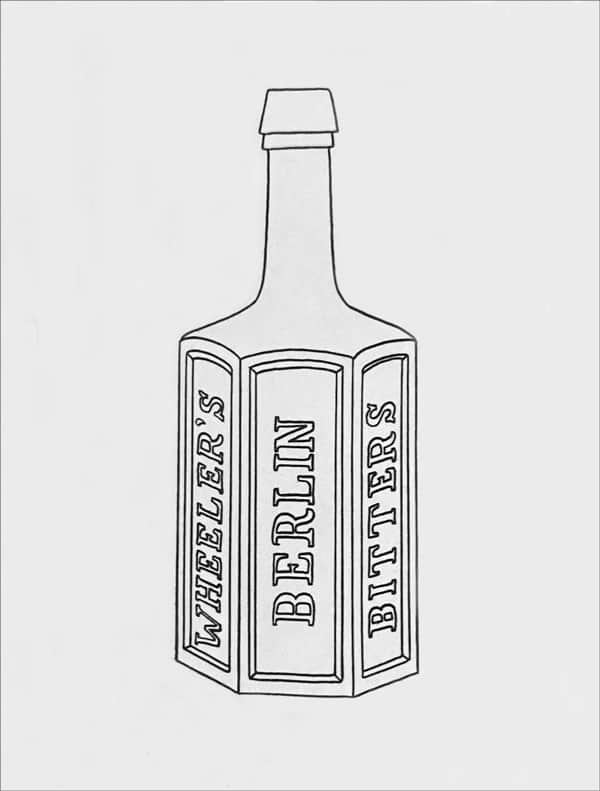
W 83 WHEELER’S // BERLIN // BITTERS // BALTIMORE // sp // sp //
9 ½ x 3 ½ (6 ½) 2 ¼
Hexagonal, DLTC, Applied mouth, Aqua, pontil mark, Extremely rare
Hexagonal, DLTC, Applied mouth, Puce, Yellow olive and Green, Metallic pontil mark, Very rare
The lettering reads reversed and base to shoulder.
Support: Reference to Bitters Bottles by Carlyn Ring and W. C. Ham. Use of Wheeler’s Berlin Bitters illustration courtesy Bill Ham.
Support Images: Auction Lot 62: “Wheeler’s / Berlin / Bitters / Baltimore” Bottle, possibly Baltimore Glass Works, Baltimore, Maryland, 1845-1860. Hexagonal with indented panels, medium golden olive amber, applied sloping collared mouth with ring – iron pontil mark, ht. 9 ½ inches. R/H #W-83 Here’s a bottle that has it all: beautiful color, attractive form, great glass character, and fine condition. – Norman Heckler, Norman C. Heckler & Company
Support Image: Wheeler’s Berlin Bar Bitters Baltimore dispenser with handles photographed at the 2015 Baltimore Antique Bottle Show.
Support Image: Extremely Rare Three-Gallon Stoneware Advertising Cooler, Impressed “WHEELER’S / BERLIN BAR BITTERS / BALTIMORE,” attributed to Maryland Pottery, Baltimore, MD, mid 19th century, cylindrical jug with rounded shoulder, stylish spout, and circular bunghole at base. Impressed in large bold-faced print “WHEELER’S / BERLIN BAR BITTERS / BALTIMORE” across front. Impressed advertising and bunghole highlighted in cobalt slip. This outstanding Baltimore advertising piece is one of the earliest examples of Baltimore advertising known, and one of a small number of advertising coolers from this city in existence. It is also the only example of its type. Both handles missing. Loss to side of spout. A few shallow chips to bunghole. Hairline in spout. Some in-the-firing crazing to surface. – Crocker Farm Auctions
Support Image: Three examples sitting outside – Dave Kyle Collection.
Support Image: Aqua example from the Ferdinand Meyer V collection. American Bottle Auctions Grapentine III Auction 43 Lot #816, Ex: Carlyn Ring
Support: Research assistance by Eric McGuire
Read More: Wheeler’s Berlin Bitters – Baltimore
Join the FOHBC: The Virtual Museum is a project of the Federation of Historical Bottle Collectors (FOHBC). To become a member.

